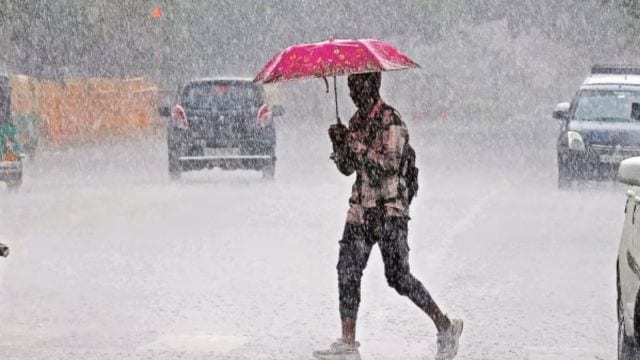IMD forecasts heavy rain in September, warns of landslides in Uttarakhand, Himachal Pradesh
The country received 743.1 mm of rainfall between June 1 and August 31, about 6 per cent above the long-period average of 700.7 mm, according to IMD data.
 There will be rainfall occurring along its track of movement, especially along the east Rajasthan, Himachal Pradesh, Uttarakhand and northern Chhattisgarh, the IMD said.
There will be rainfall occurring along its track of movement, especially along the east Rajasthan, Himachal Pradesh, Uttarakhand and northern Chhattisgarh, the IMD said. Even as parts of the country, especially in the north, are reeling under heavy rainfall, the India Meteorological Department (IMD) on Sunday said September was likely to see above-normal rainfall, and warned of landslides and flash floods in Uttarakhand and Himachal Pradesh.
The monthly average rainfall in September is expected to be more than 109 per cent of the long-period average of 167.9 mm, it said. The country received 743.1 mm of rainfall between June 1 and August 31, about 6 per cent above the long-period average of 700.7 mm, according to IMD data.
“Our extended range forecasts heavy rain which could possibly trigger landslides, mudslides over Uttarakhand and Himachal Pradesh. Rains are also expected over Punjab, Haryana, Delhi, east Rajasthan, Gujarat, west Madhya Pradesh and the west coast till September 4,” IMD Director General Mrutyunjay Mohapatra said on Sunday.
On September 2, a fresh low pressure system is expected to develop in the Bay of Bengal. There will be rainfall along its movement track, especially along east Rajasthan, Himachal Pradesh, Uttarakhand and northern Chhattisgarh, the IMD said.
The forecast suggests most regions will get normal to above-normal rainfall. However, in the final month of the season, below-average rain is expected over Kerala, south Karnataka and adjoining Andhra Pradesh, Jammu and Kashmir, Ladakh and large parts of north eastern regions.
Although September is a month for seasonal transition, the commencement of the withdrawal of the monsoon has been ruled out during the first week, Mohapatra said. “The upcoming low pressure system will bring rain along the Indo Gangetic plains. So, the monsoon withdrawal is unlikely in the first week of September,” he said.
The IMD defines June to September as the southwest monsoon season. But since the 1980s, rainfall during September has been increasing slightly. This overstay has affected the interaction between the monsoonal winds and the post-monsoonal weather systems. “After the monsoon season, as we approach the post-monsoon or winter season, the western disturbances grow stronger. When the monsoon winds interact with the western disturbances, higher-than-normal rainfall occurs,” he said.
In 2020, the IMD had revised the normal date for commencement of the monsoon withdrawal (from the extreme parts of northwest India) from September 1 to September 17.
Mohapatra said Northwest India recorded 265 mm of rainfall in August, the highest for the month since 2001 and the 13th highest since 1901. The region has experienced above-normal rainfall in all three months of the monsoon season so far. Cumulatively, northwest India has received 614.2 mm of rain between June 1 and August 31, about 27 per cent higher than the normal of 484.9 mm.
The unusually high rainfall coincided with a series of extreme weather events. Punjab suffered its worst flooding in decades, with swollen rivers and breached canals inundating thousands of hectares of farmland and displacing lakhs of people. In the Himalayan states of Himachal Pradesh, Uttarakhand and Jammu and Kashmir, cloudbursts and flash floods triggered landslides and caused widespread damage to life and property.
The IMD attributed the surplus rain to active monsoon conditions supported by frequent western disturbances that enhanced rainfall over the region.
Mohapatra said active western disturbances between July 28 and August 14 triggered heavy to very-heavy rain over the western Himalayas and adjoining plains, causing a flash flood and landslide in Uttarkashi on August 5 and major riverine floods in Uttar Pradesh and Bihar. He said the monsoon revived rapidly from August 14, with four low-pressure systems sustaining active conditions for 15 days in the second half of the month.
South Peninsular India recorded 250.6 mm of rainfall in August, about 31 per cent above normal, making it the third highest for the month since 2001 and the eighth highest since 1901, according to the IMD. Cumulatively, the region received 607.7 mm of rain between June 1 and August 31 against the normal of 556.2 mm, a surplus of 9.3 per cent. —With PTI







